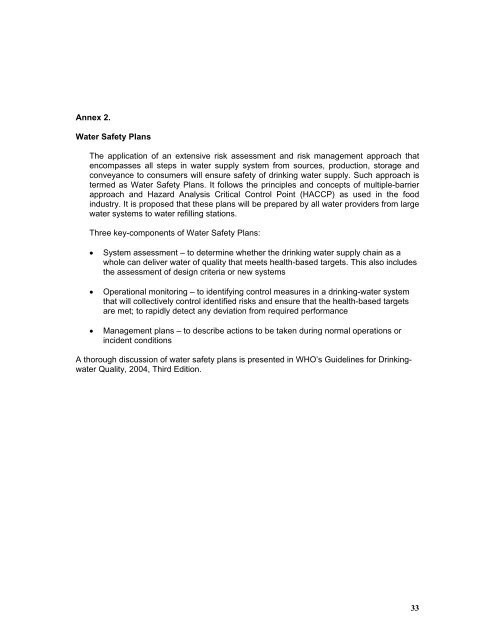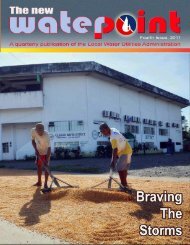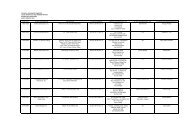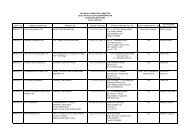Philippine National Standards for Drinking Water - LWUA
Philippine National Standards for Drinking Water - LWUA
Philippine National Standards for Drinking Water - LWUA
You also want an ePaper? Increase the reach of your titles
YUMPU automatically turns print PDFs into web optimized ePapers that Google loves.
Annex 2.<br />
<strong>Water</strong> Safety Plans<br />
The application of an extensive risk assessment and risk management approach that<br />
encompasses all steps in water supply system from sources, production, storage and<br />
conveyance to consumers will ensure safety of drinking water supply. Such approach is<br />
termed as <strong>Water</strong> Safety Plans. It follows the principles and concepts of multiple-barrier<br />
approach and Hazard Analysis Critical Control Point (HACCP) as used in the food<br />
industry. It is proposed that these plans will be prepared by all water providers from large<br />
water systems to water refilling stations.<br />
Three key-components of <strong>Water</strong> Safety Plans:<br />
• System assessment – to determine whether the drinking water supply chain as a<br />
whole can deliver water of quality that meets health-based targets. This also includes<br />
the assessment of design criteria or new systems<br />
• Operational monitoring – to identifying control measures in a drinking-water system<br />
that will collectively control identified risks and ensure that the health-based targets<br />
are met; to rapidly detect any deviation from required per<strong>for</strong>mance<br />
• Management plans – to describe actions to be taken during normal operations or<br />
incident conditions<br />
A thorough discussion of water safety plans is presented in WHO’s Guidelines <strong>for</strong> <strong>Drinking</strong>water<br />
Quality, 2004, Third Edition.<br />
33







